Serial # OE335002
I previously posted about this motor. The short version is that after a 2 hour cruise, I could no longer get the motor to idle, and it died A LOT trying to get it into gear.
After spraying a can of carb cleaner in the intake and making some carb adjustments, I gave up and took it to a mechanic. He found a defective trigger assembly. He replaced it, started the engine, it ran well, then started idling rough. He pulled the head, and found water in Cylinders 1-3. I told him to stop work on the motor and took it home (with encouragement from this forum's members).
Here are the results of his compression test, which are close to the numbers I got when I bought the boat 2 years ago (and also match a previous test in some maintenance paperwork I got with the boat):
#1-160
#2- 165
#3- 170
#4- 160
The head was already pulled when I picked the boat back up, and the water in the cylinders was obvious (but more so in Cylinder #2).
So, I pulled the exhaust cover and plate to check for obvious leakage. I couldn't find any obvious cracks in the exhaust plate, and all bolts were very clean and easy to get out, but three had rust and carbon on them. I'm wondering if my leak was somewhere in this area- but the gaskets didn't look bad. See pics related to those bolts:
Exhaust Plate
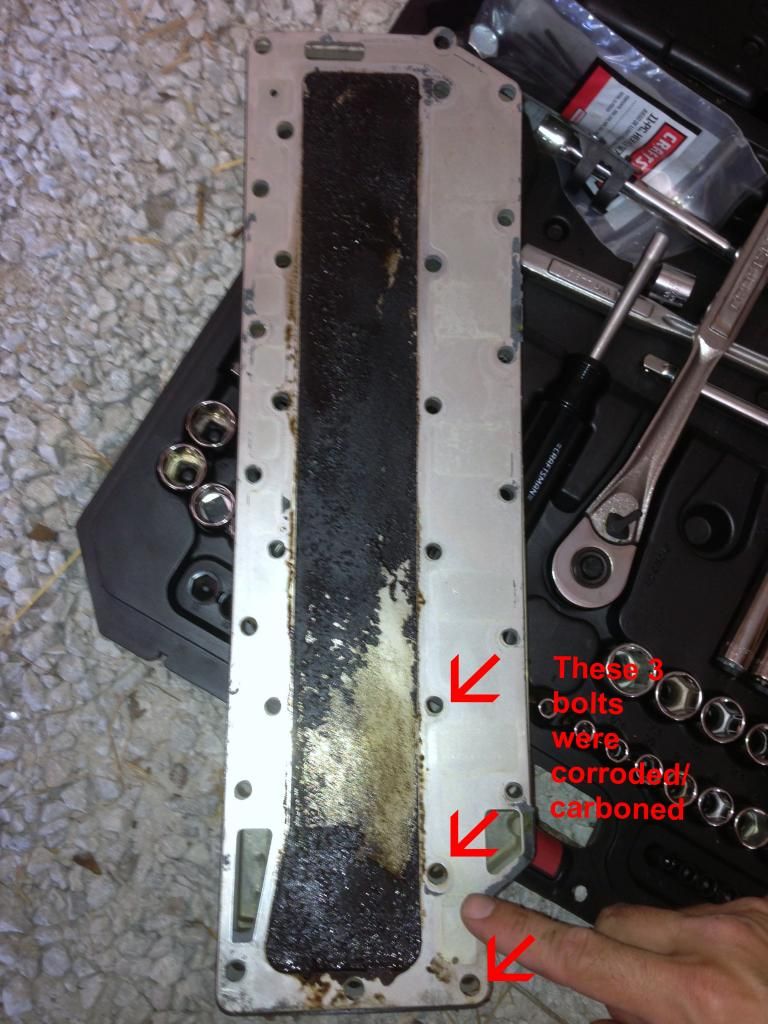
Exhaust Chamber
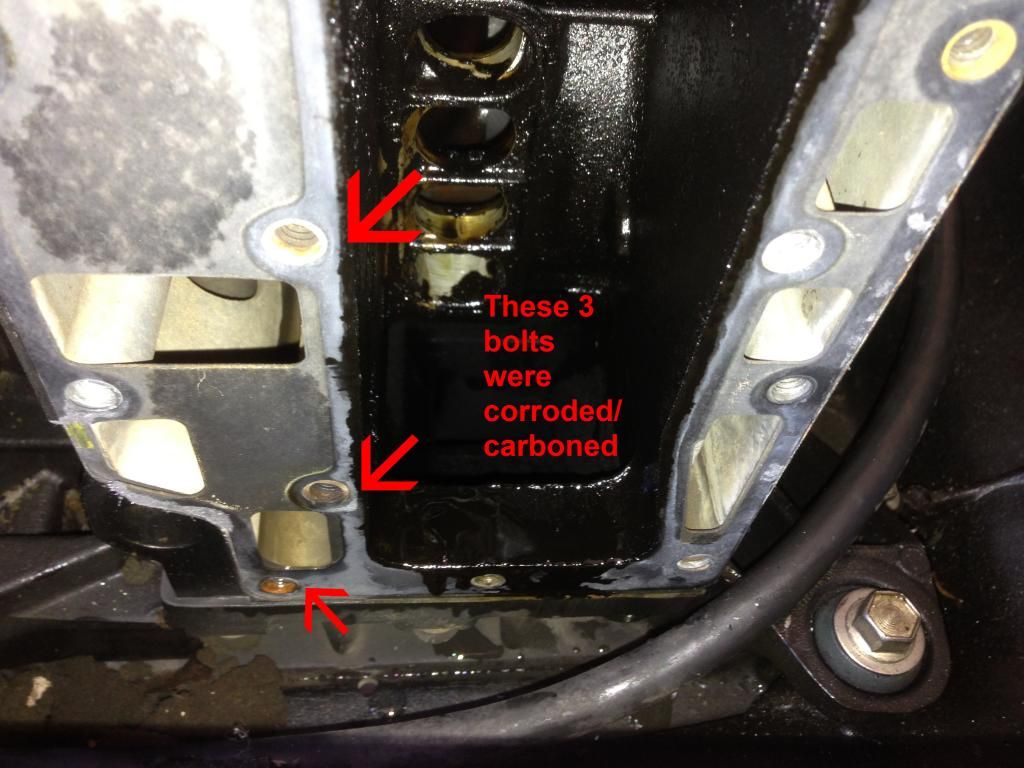
Exhaust Bolts
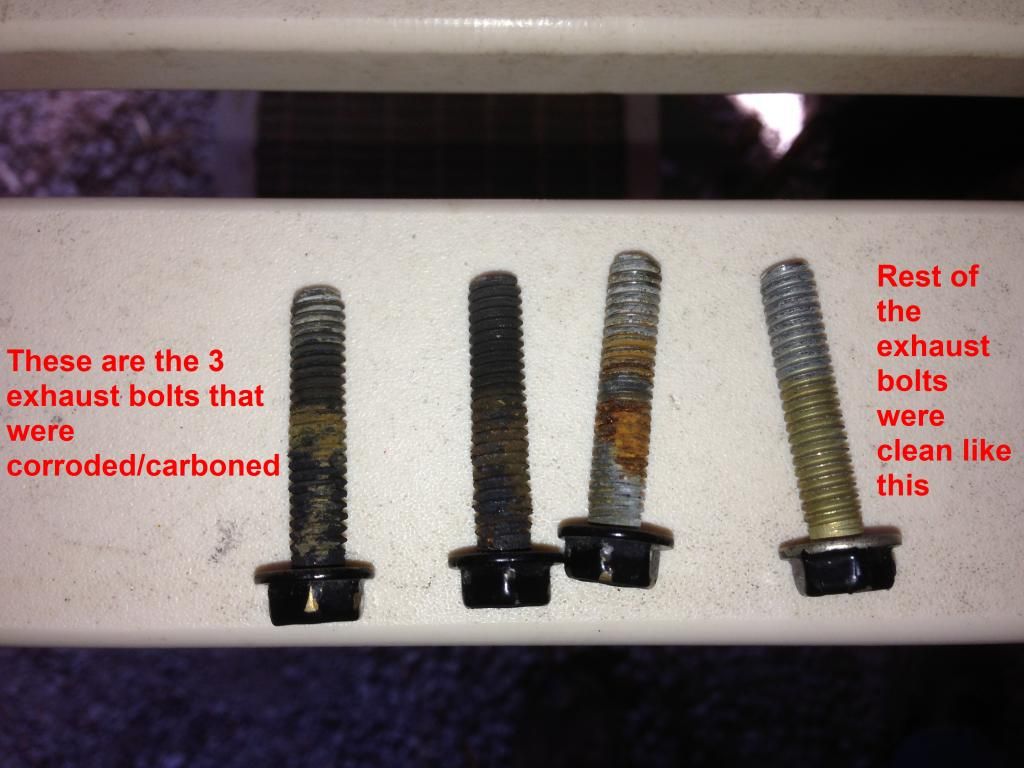
Here is a picture of the cylinder head. Cylinder #2 had a milkshake mixture of gas/oil and water. Mechanic said cylinders 1, 2, and 3 were getting water, but it was the most obvious in Cylinder #2.
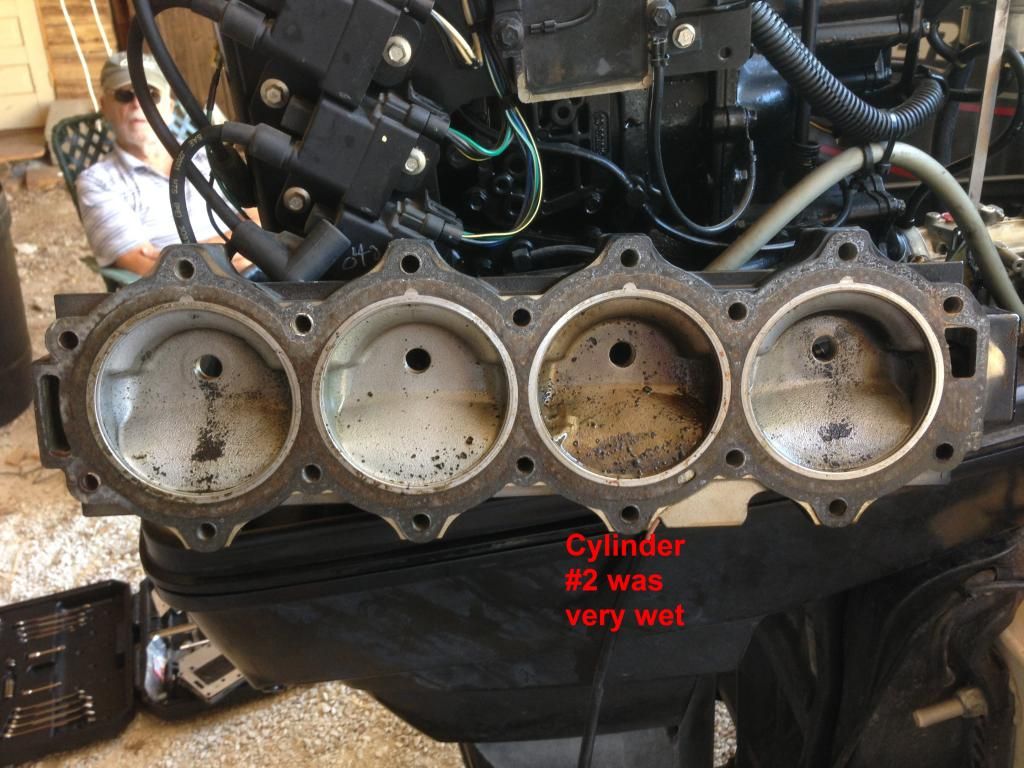
Here are pictures of each cylinder. I think I see evidence of steam cleaning.
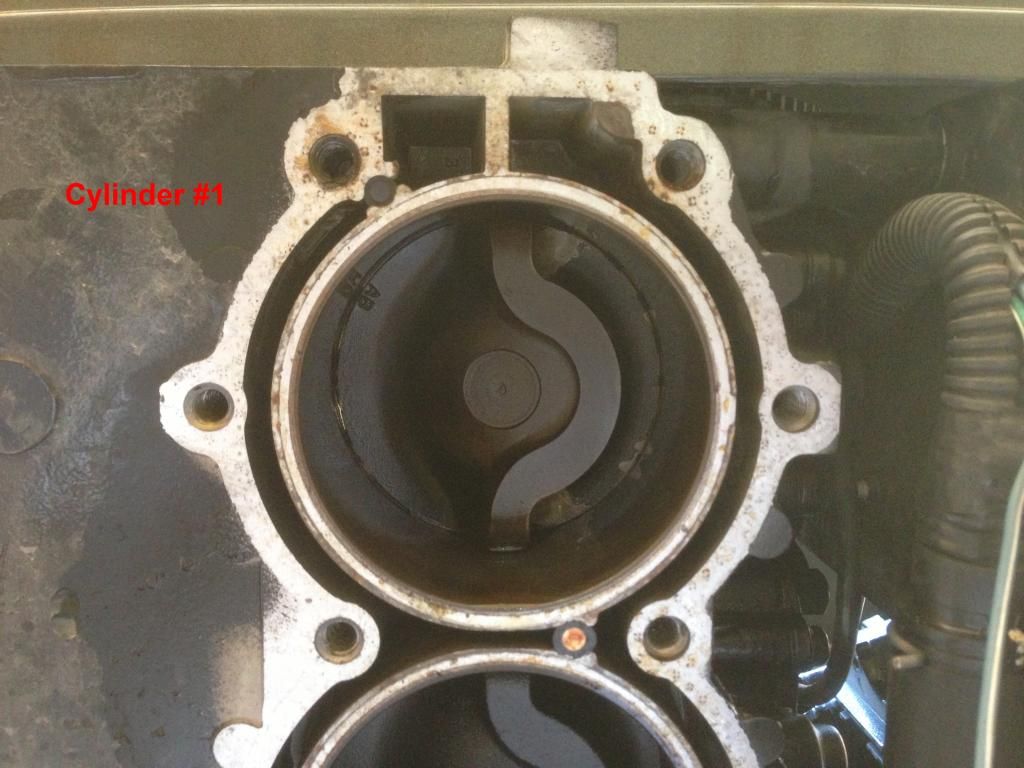
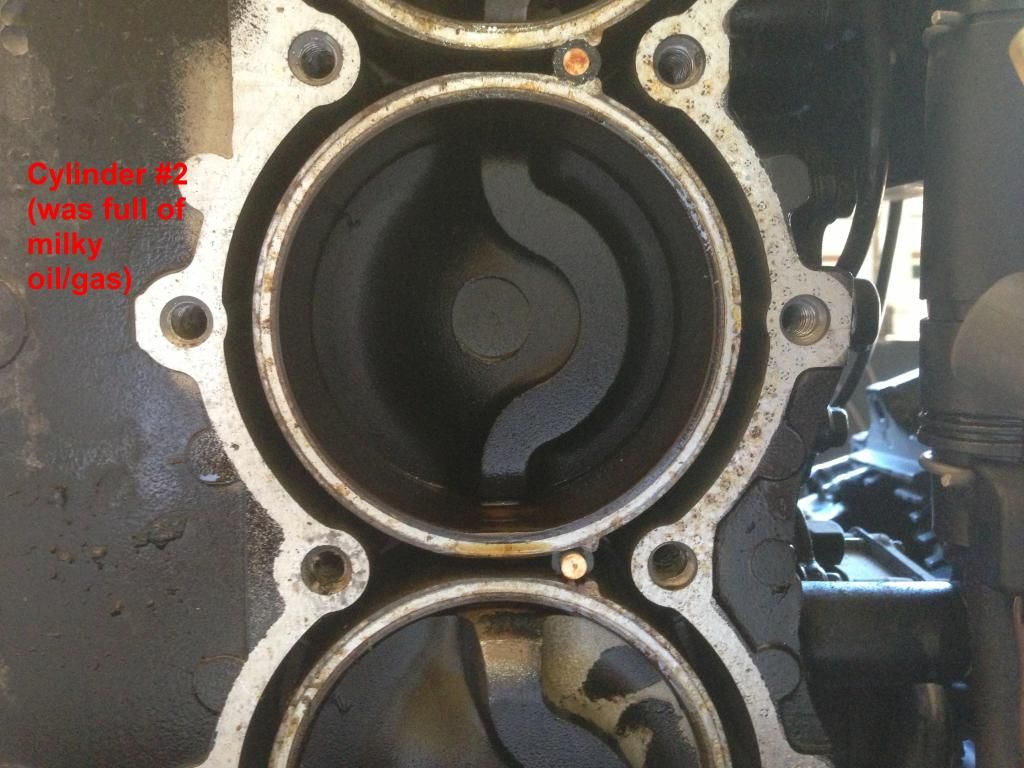
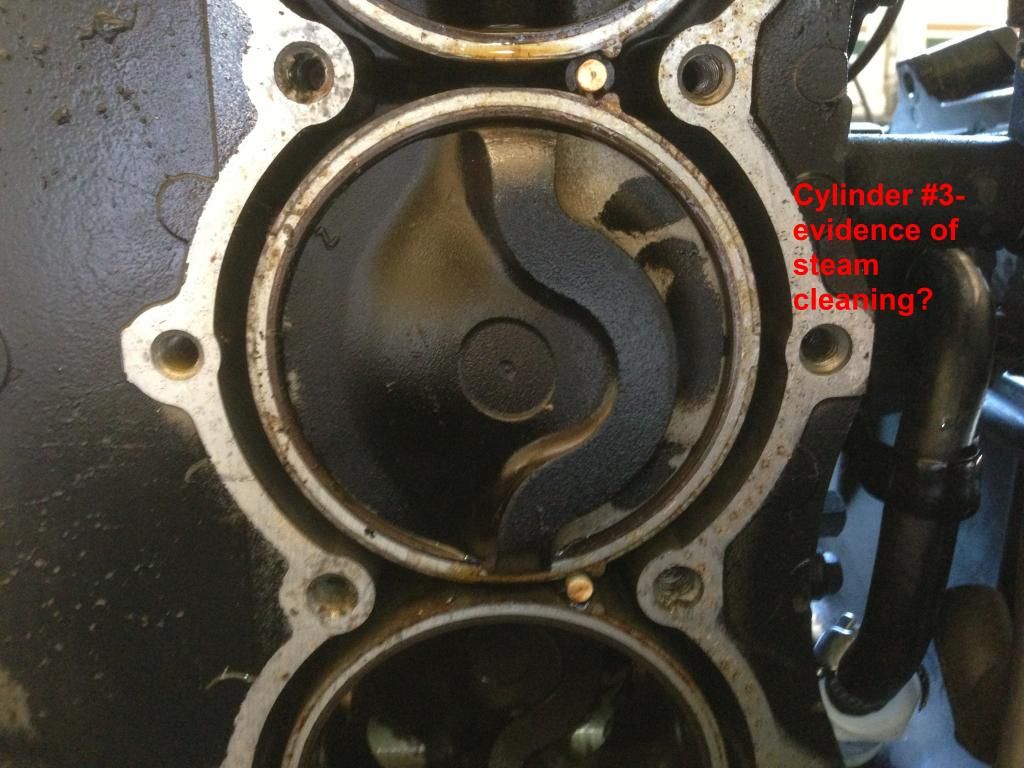
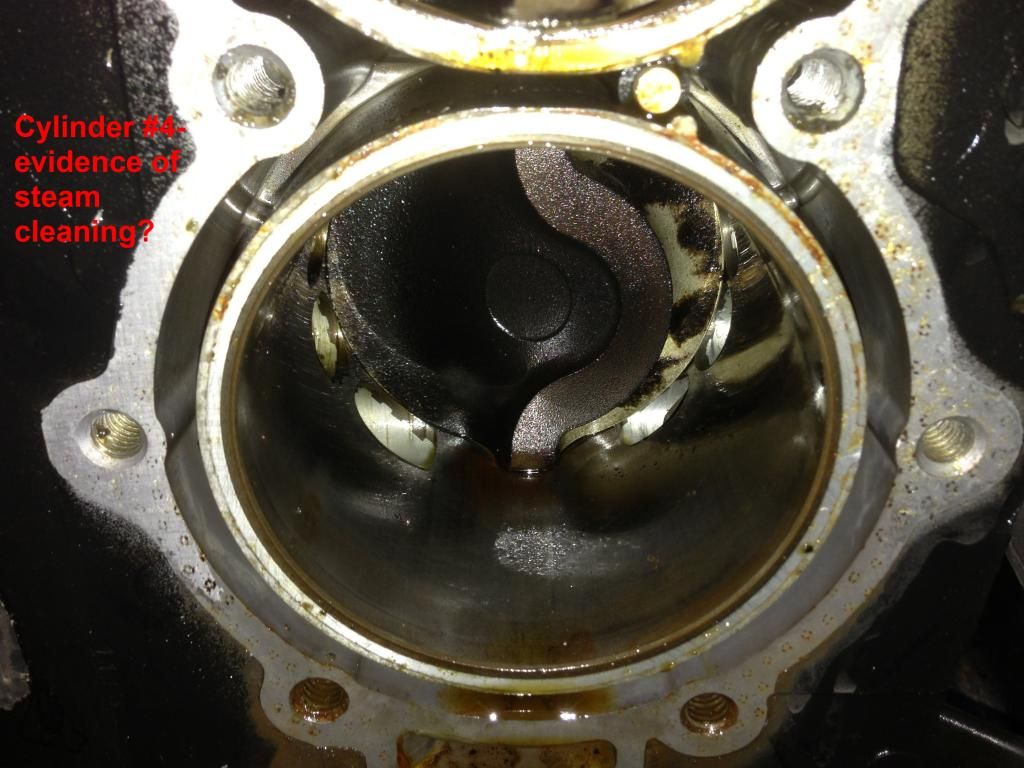
Here are pictures of the exhaust side. Note the absence of carbon on the wall of the exhaust chamber for some of the cylinders. Either this is the result of steam cleaning, or that can of carburetor cleaner I used:
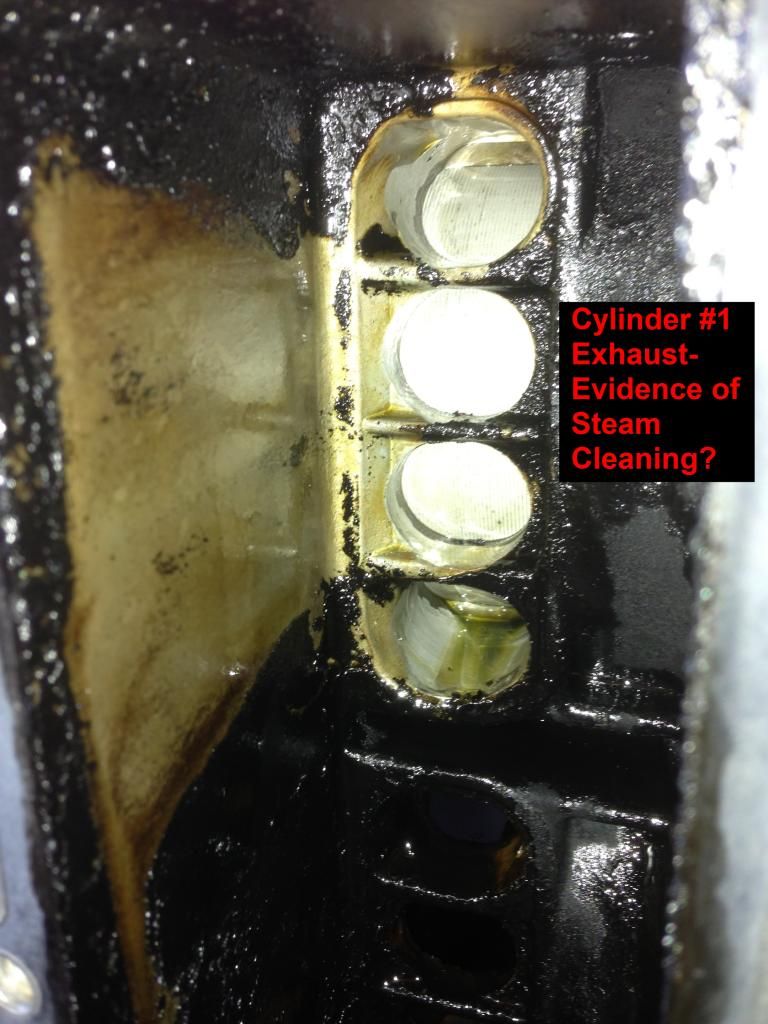
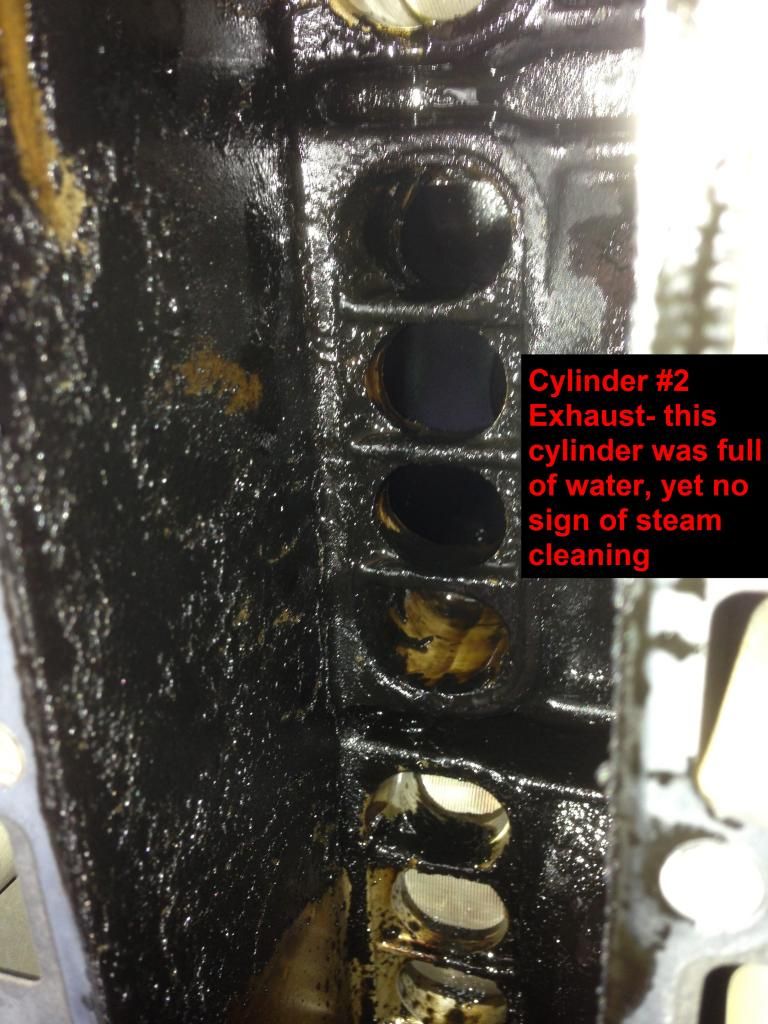
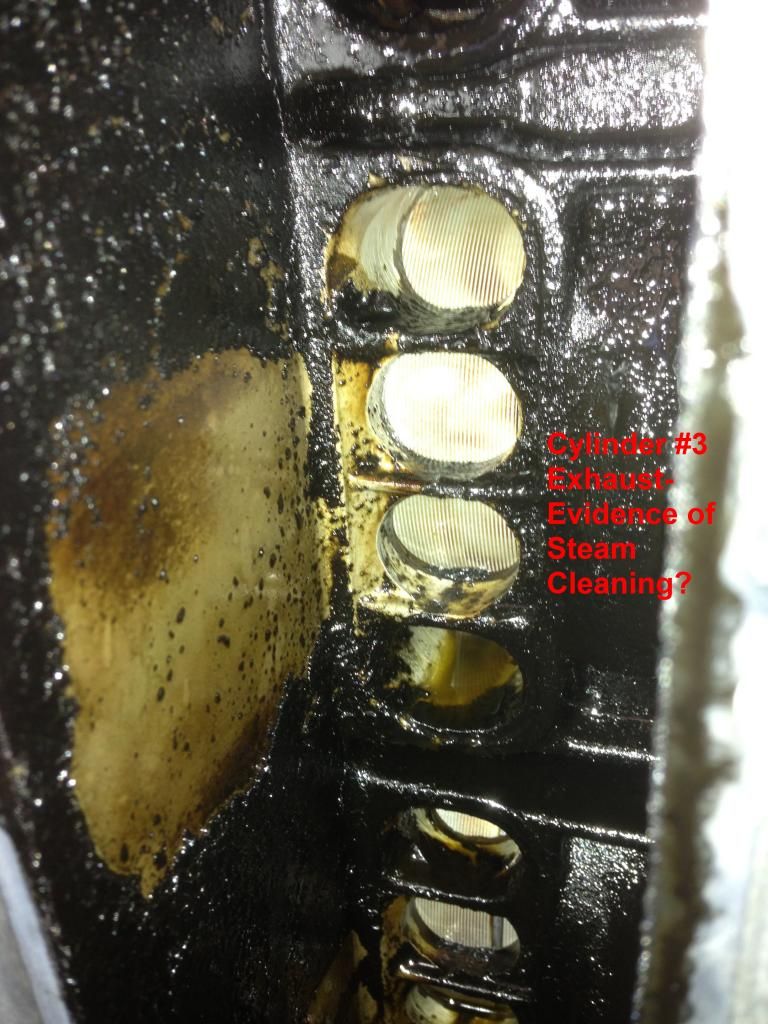
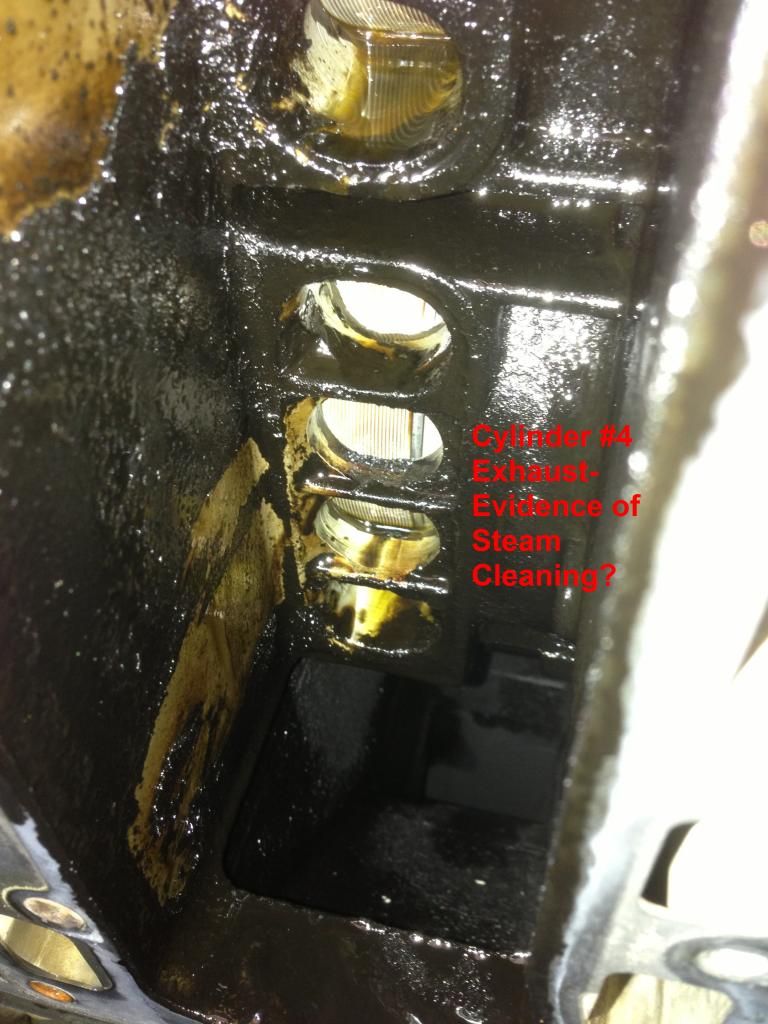
The mechanic noted that it looked like a fuel line had degraded from the inside and there were rubber pieces in the carbs. I squirted some gas from the fuel line from the tank into a jar, and found rubber pieces in the gas. I think my primer bulb is bad and will replace and check again. I opened the throttle plate on the carbs to look at the reeds, and noticed one missing, so I pulled the carbs and the reed blocks.
Here is what they look like- note that I found oil/water on the reed block and intake for Cylinder #2.
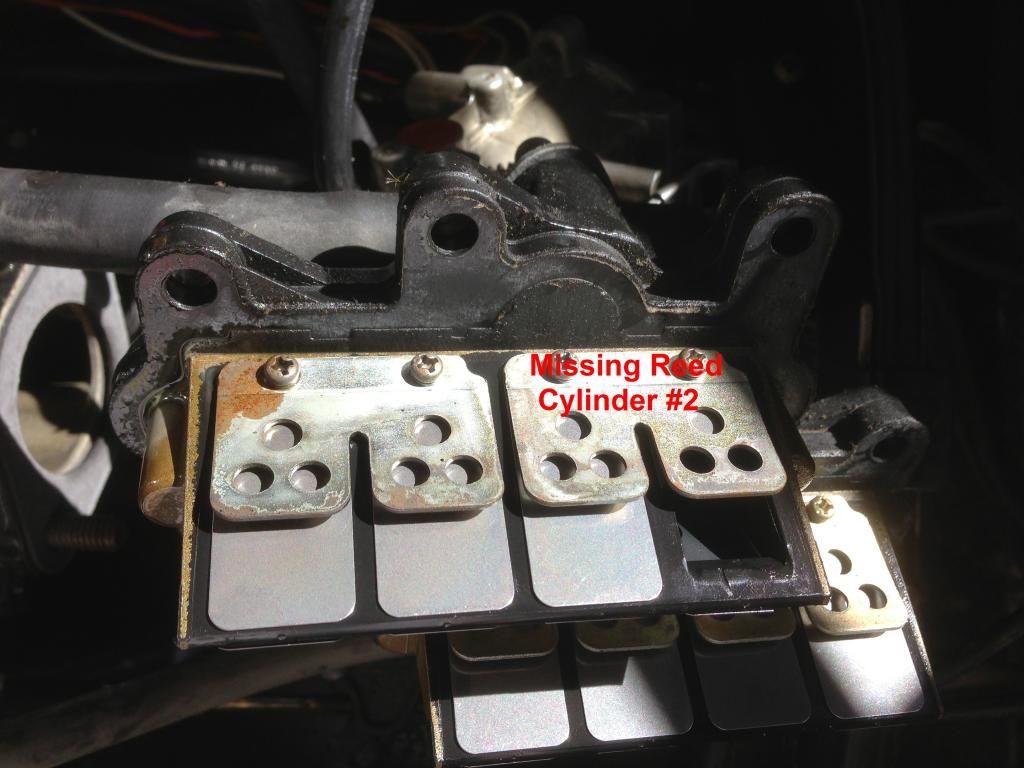
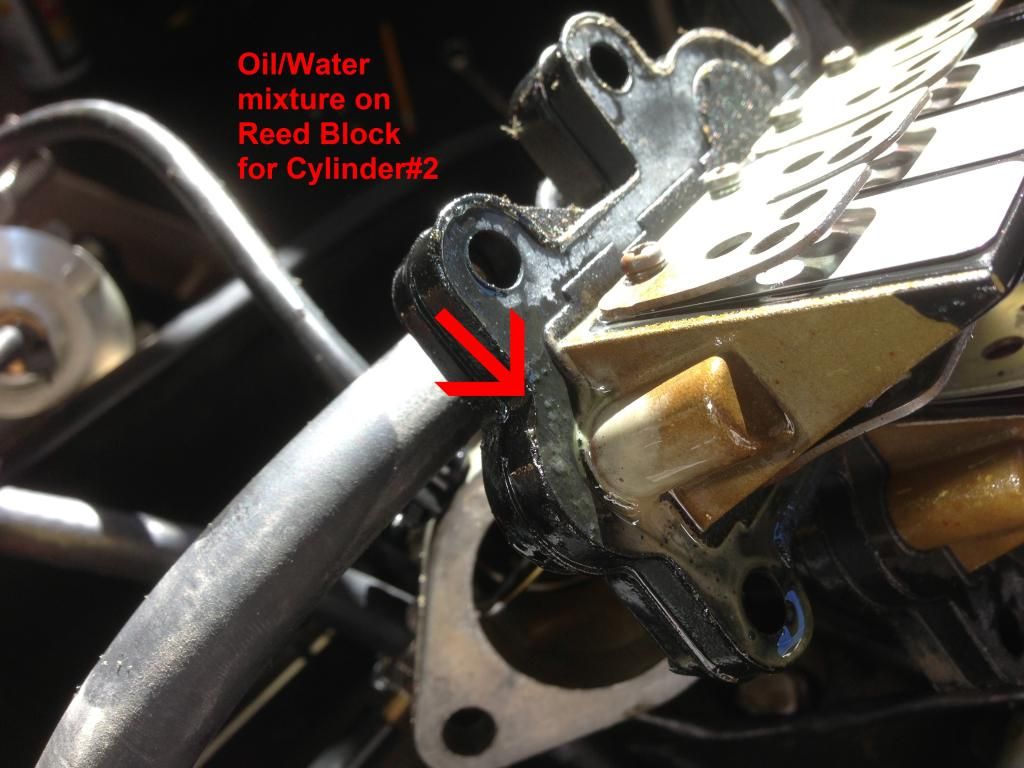
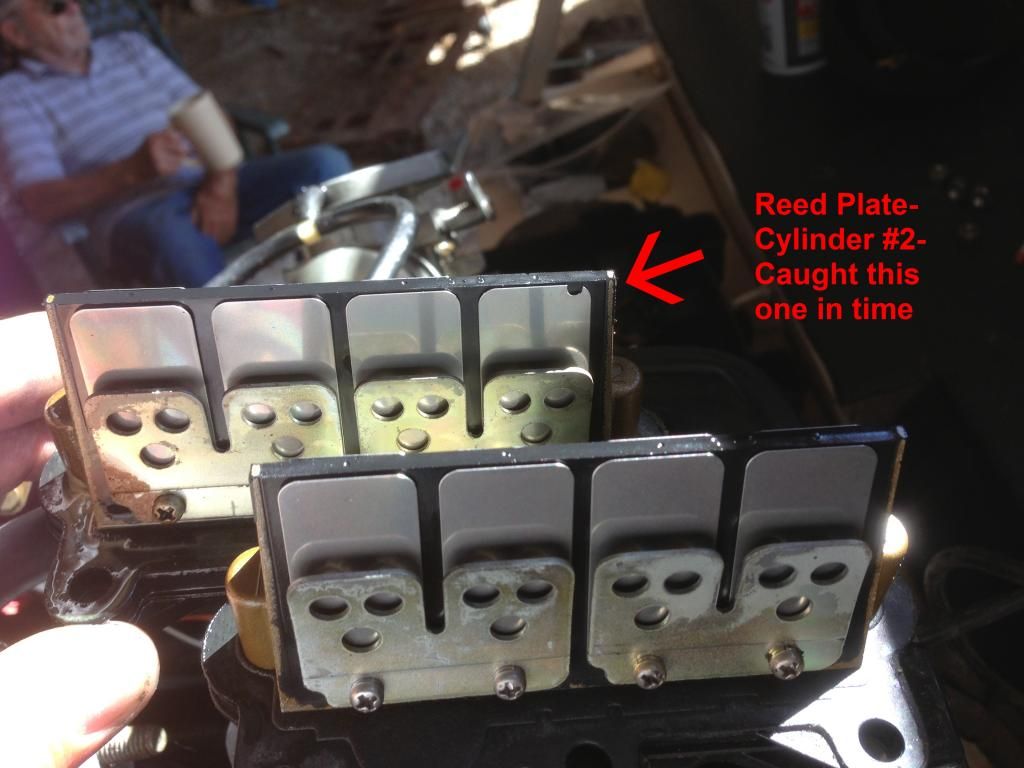
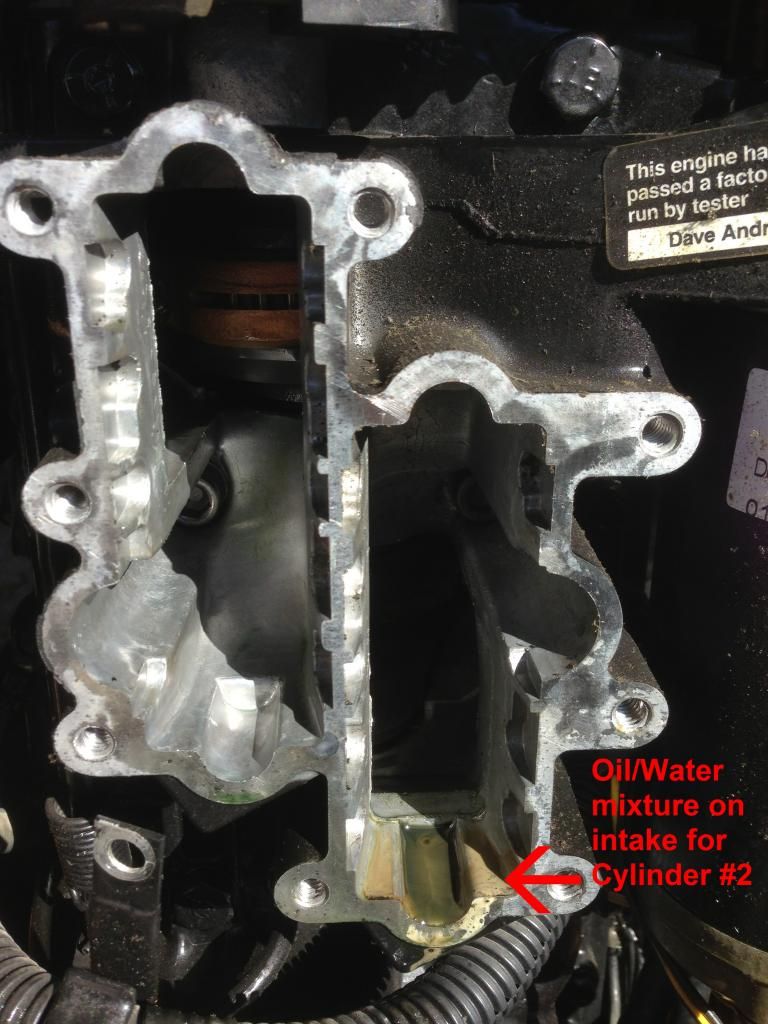
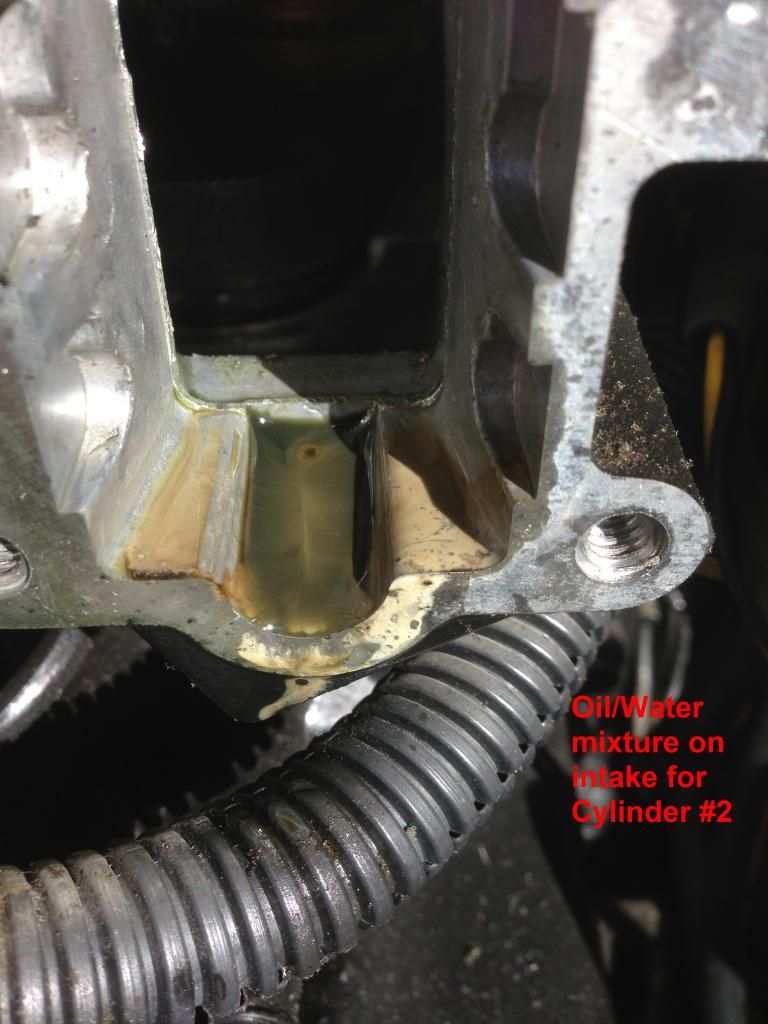
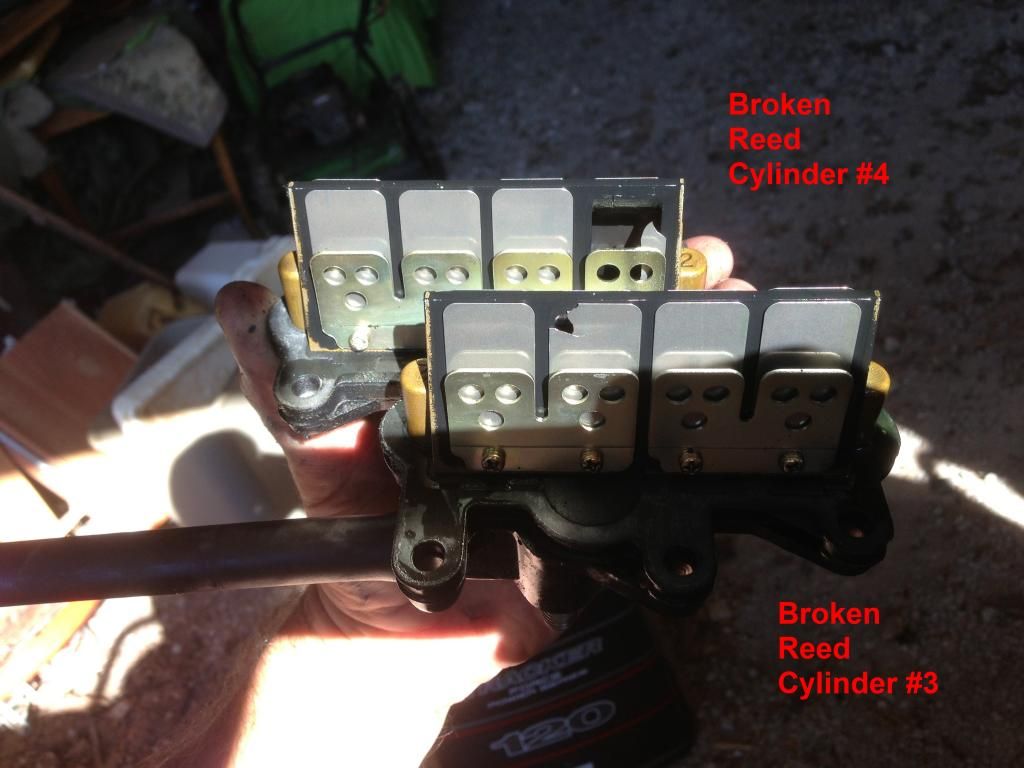
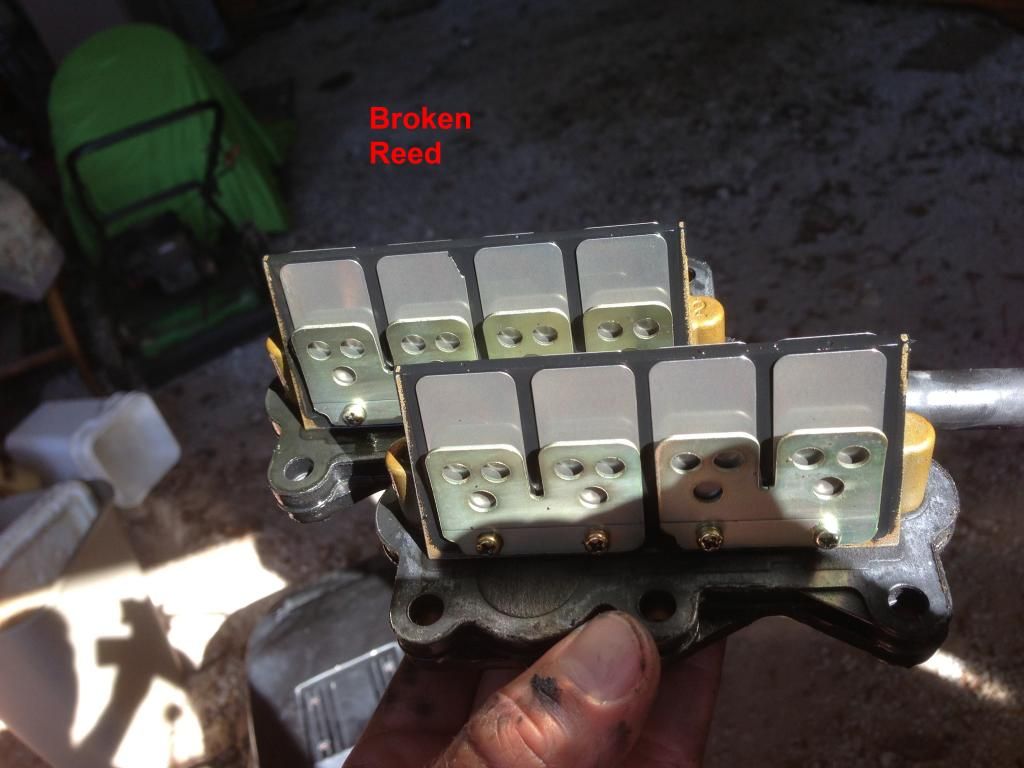
So, I will order new exhaust gaskets and a new head gasket (looked fine, but just in case). Any opinions on if I should try to find a new exhaust plate?
I've also found 2 used reed blocks with intact plates for $10.00 on eBay. Snatched those up, and will replace the reeds that are broken or aren't seating well.
Please let me know if you see anything in the pics that I've missed, and let me know if I should do anything else at this point. The motor is 2 hours away, so I can't take additional pictures, but do have a few closeups of where the gasket seals on the exhaust chamber and some closeups of the head gasket. If you want to see those too, I'll post. Thanks!
I previously posted about this motor. The short version is that after a 2 hour cruise, I could no longer get the motor to idle, and it died A LOT trying to get it into gear.
After spraying a can of carb cleaner in the intake and making some carb adjustments, I gave up and took it to a mechanic. He found a defective trigger assembly. He replaced it, started the engine, it ran well, then started idling rough. He pulled the head, and found water in Cylinders 1-3. I told him to stop work on the motor and took it home (with encouragement from this forum's members).
Here are the results of his compression test, which are close to the numbers I got when I bought the boat 2 years ago (and also match a previous test in some maintenance paperwork I got with the boat):
#1-160
#2- 165
#3- 170
#4- 160
The head was already pulled when I picked the boat back up, and the water in the cylinders was obvious (but more so in Cylinder #2).
So, I pulled the exhaust cover and plate to check for obvious leakage. I couldn't find any obvious cracks in the exhaust plate, and all bolts were very clean and easy to get out, but three had rust and carbon on them. I'm wondering if my leak was somewhere in this area- but the gaskets didn't look bad. See pics related to those bolts:
Exhaust Plate
Exhaust Chamber
Exhaust Bolts
Here is a picture of the cylinder head. Cylinder #2 had a milkshake mixture of gas/oil and water. Mechanic said cylinders 1, 2, and 3 were getting water, but it was the most obvious in Cylinder #2.
Here are pictures of each cylinder. I think I see evidence of steam cleaning.
Here are pictures of the exhaust side. Note the absence of carbon on the wall of the exhaust chamber for some of the cylinders. Either this is the result of steam cleaning, or that can of carburetor cleaner I used:
The mechanic noted that it looked like a fuel line had degraded from the inside and there were rubber pieces in the carbs. I squirted some gas from the fuel line from the tank into a jar, and found rubber pieces in the gas. I think my primer bulb is bad and will replace and check again. I opened the throttle plate on the carbs to look at the reeds, and noticed one missing, so I pulled the carbs and the reed blocks.
Here is what they look like- note that I found oil/water on the reed block and intake for Cylinder #2.
So, I will order new exhaust gaskets and a new head gasket (looked fine, but just in case). Any opinions on if I should try to find a new exhaust plate?
I've also found 2 used reed blocks with intact plates for $10.00 on eBay. Snatched those up, and will replace the reeds that are broken or aren't seating well.
Please let me know if you see anything in the pics that I've missed, and let me know if I should do anything else at this point. The motor is 2 hours away, so I can't take additional pictures, but do have a few closeups of where the gasket seals on the exhaust chamber and some closeups of the head gasket. If you want to see those too, I'll post. Thanks!



















